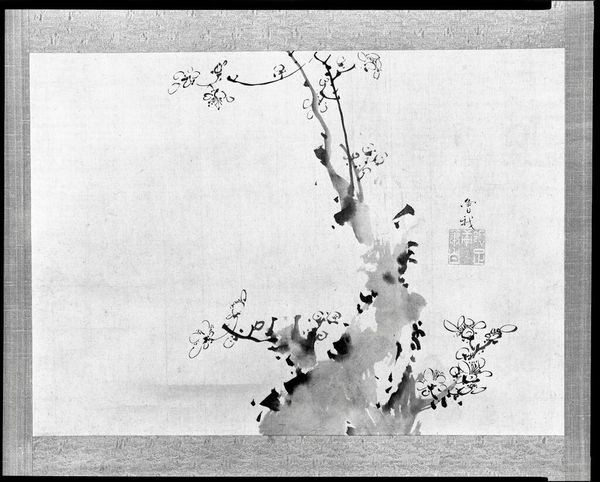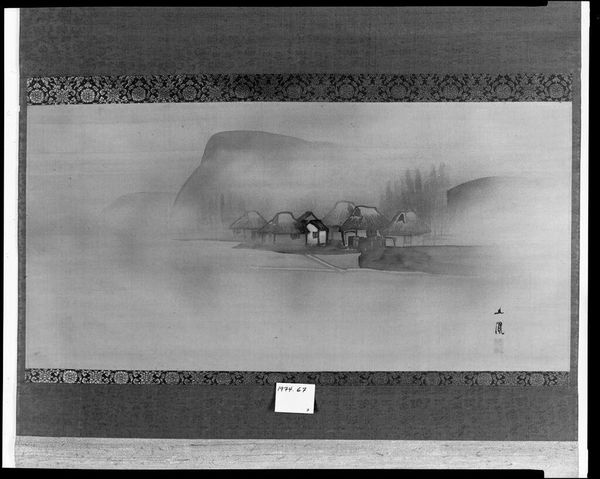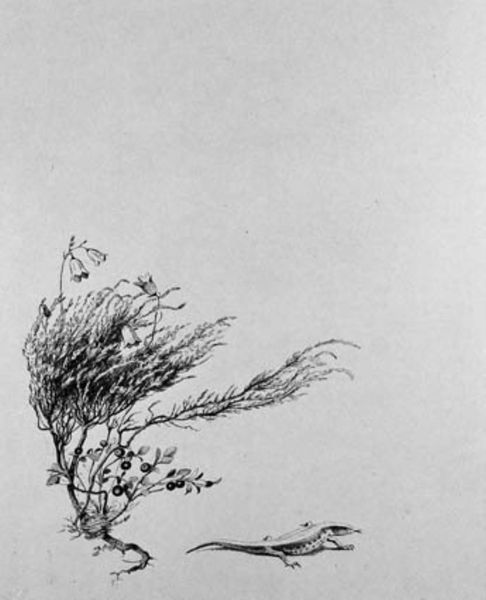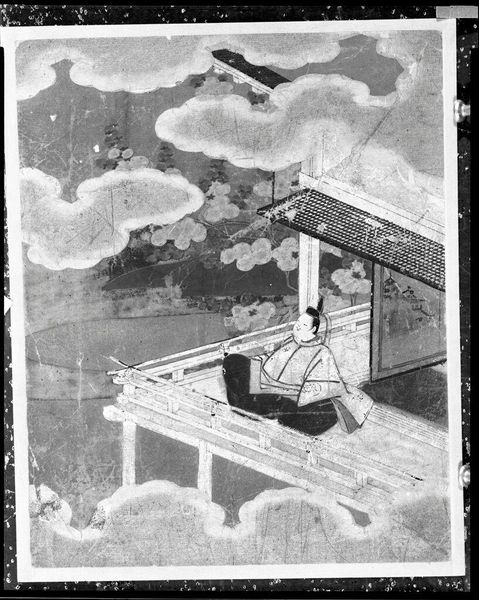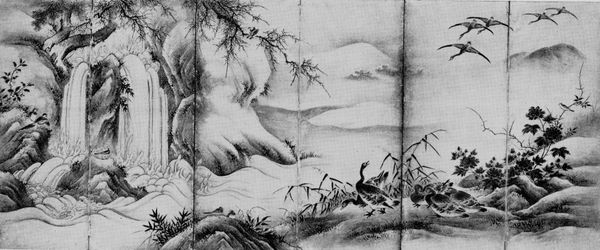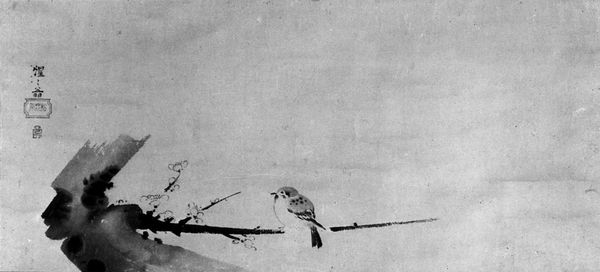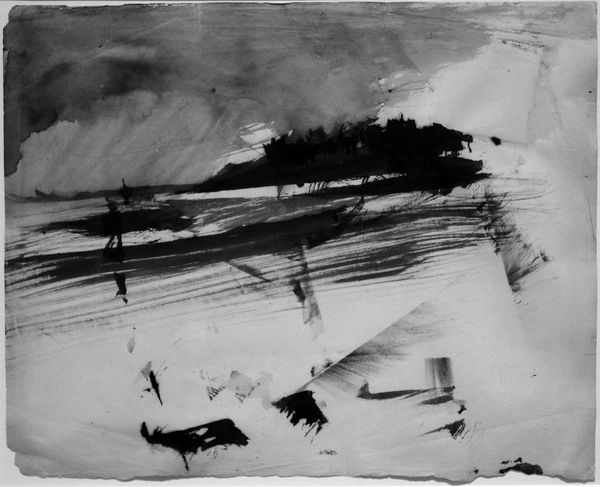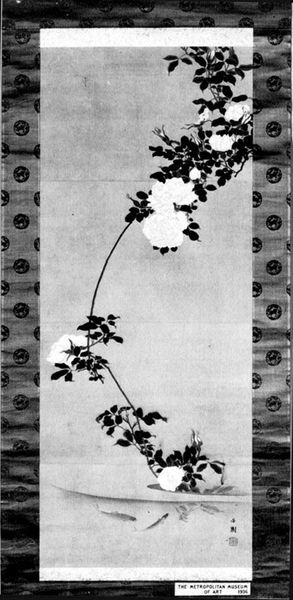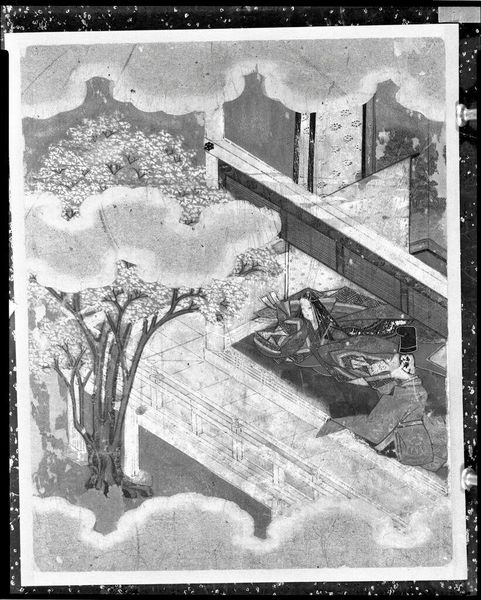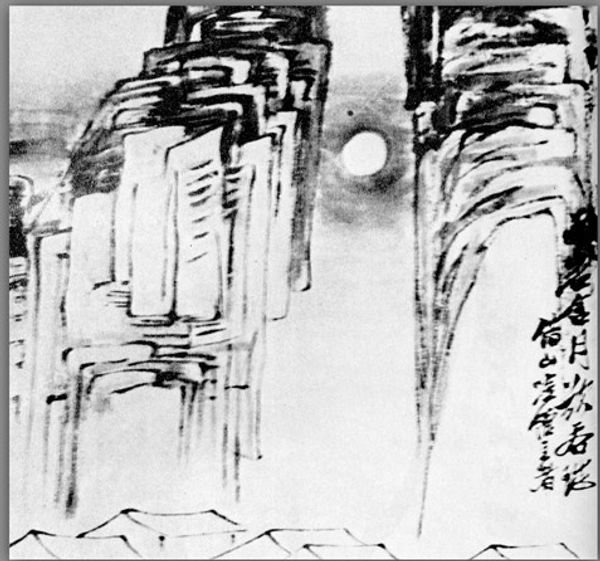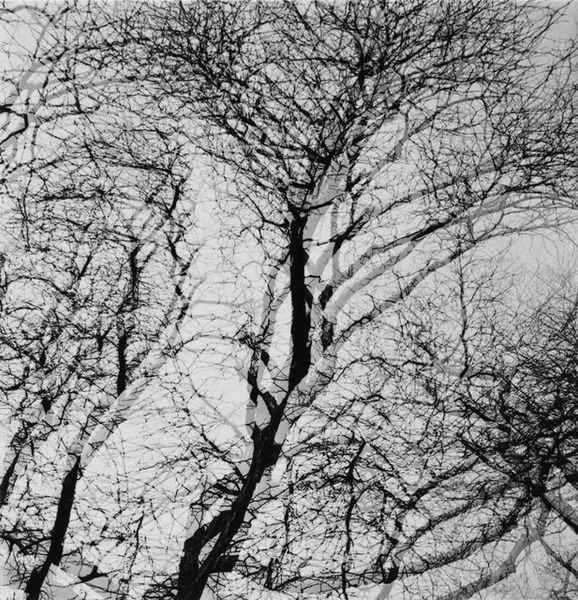
Copyright: Public domain US
Curator: This spare ink drawing, titled "Landscape," was created in 1909 by the artist Qi Baishi. The composition features boats on water above several stark trees. What's your immediate impression? Editor: It feels stark and perhaps a bit melancholy. The monochromatic palette coupled with the stark lines evokes a sense of quiet contemplation, yet there is movement here—the sailing boats create a powerful suggestion of journeys. Curator: Yes, it captures the visual language that we see repeatedly in East Asian art history, drawing parallels to traditions such as ukiyo-e. Consider how line, often favored as a core aspect of visual expression over shadow and gradation, allows artists a symbolic short hand. Editor: The symbolism certainly jumps out. Ships, in particular, often stand as potent emblems of migration, displacement, and cultural exchange—it forces you to meditate on trade routes and the personal stories within. How does Baishi use the historical weight of these signs? Curator: It's more implicit than explicit here, I would argue. Baishi avoids overtly didactic or politicized readings by embedding familiar images within what might at first seem purely like a meditation on a peaceful natural scene. The weeping willows, another recurrent motif, are typically read as metaphors of melancholy, as you intuited initially. Editor: Which gives the boats—usually signs of hope or commerce—an entirely different aura. We're forced to reflect on their passage with some degree of skepticism, mindful of loss and colonial violence perhaps, rather than easy prosperity. Curator: Precisely, especially considering that "Landscape," emerged during a tumultuous historical moment marked by cultural exchange between Asia and the West, one where loss, negotiation, and compromise, are very visible undercurrents. Editor: The interplay of form and historical context enriches what could easily be dismissed as just a landscape piece. I appreciate the nuanced ways an ostensibly simple drawing invites dialogues about globalization. Curator: Ultimately, I agree. It shows how even seemingly quiet ink washes are inscribed with echoes of journeys both physical and metaphorical. A dialogue between nature, art history, and our own temporal existence. Editor: Yes, and this piece encourages us to think more deeply about the historical intersections embedded in commonplace imagery.
Comments
No comments
Be the first to comment and join the conversation on the ultimate creative platform.
